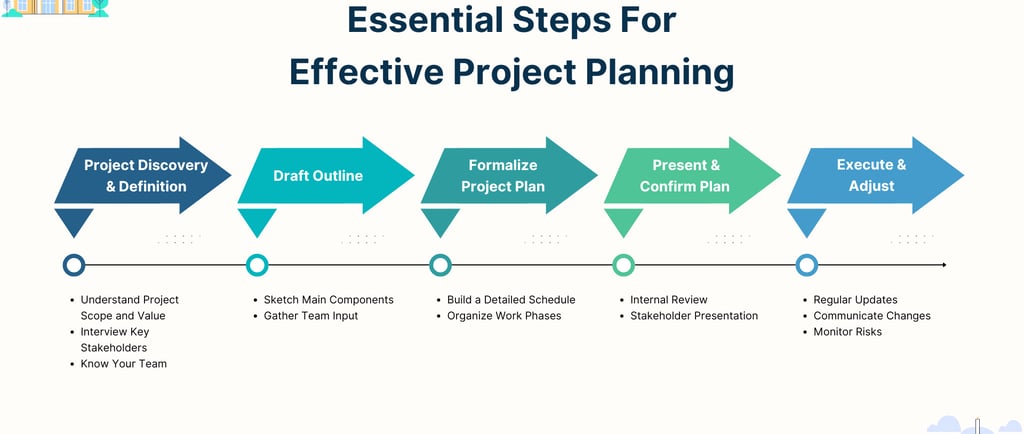The Essential Guide to Crafting an Effective Project Plan
Learn how to craft an effective project plan that guides your team to success with clear steps, essential components, and tips for maintaining accountability and alignment.
Iyanna Trimmingham
7/25/20244 min read


As a project manager, a crucial part of your role is to develop comprehensive project plans that keep projects on track. But that’s not all a project plan should do.
A project plan is arguably the most critical document you'll create for a project. At its core, a plan should communicate your project approach and the process your team will use to manage the project according to scope.
Here’s how you can develop a robust planning process that guides your team and projects to success.
Understanding the Project Plan
A project plan is a document that maps out the tasks, effort, timing, and resources needed to meet project goals within a predefined scope. A solid project management plan should answer the following questions:
What are the major deliverables?
How will we achieve those deliverables and meet the deadline?
Who’s on the project team, and what role will they play?
Which stakeholders need to provide feedback on deliverables, and when?
When will the team meet milestones?
A project plan communicates this information in a straightforward way, so everyone clearly understands the objectives and how they contribute to project success.
Key Components of a Project Plan
While no two project plans are alike, they all share common building blocks:
Project tasks: A detailed list of work to be done, organized by project phase, process step, or work group.
Project schedule: A visual timeline of task start dates, durations, and deadlines, with clear progress indicators.
Key milestones: Major events, dates, decisions, and deliverables used for tracking progress.
Dependencies: A line connecting tasks that need to happen in a specific order.
Resources: Assignments that indicate the person or team responsible for completing a task.
Always Write a Project Plan
Some may not understand the power of a good project plan. If you feel pressured to skip the plan and jump right into the work, remind your team and stakeholders that having a plan benefits everyone by making it easier to:
Build consensus before work begins: A detailed project plan ensures everyone has a clear understanding of—and agrees on—the overall process, scope, staffing, and even communications from the outset, reducing confusion and preventing last-minute requests.
Avoid scheduling conflicts: Project plans help organize tasks so it’s clear who’s responsible for what and when. If your team is juggling multiple projects, you can cross-reference other plans to see who’s available before committing to a timeline.
Monitor project goals and scope: When new tasks creep in, it’s easy to lose sight of the original objectives. A time-based plan keeps project goals front and center, ensuring the project scope stays intact.
Hold your team and stakeholders accountable: A good project plan sets expectations around the process and pacing you'll follow each step of the way. When plans are shared, it keeps everyone honest and forces timely resolution of issues.
5 Steps to an Effective Project Planning Process
Poor planning can lead to missed deadlines, budget overages, team burnout, and client frustration. Establishing a solid process for planning any project can prevent these issues.
Step 1: Start with Project Discovery and Definition
A project plan is more than just a document with dates. It’s the story of your project. Ensure you know all the facts before creating a project plan:
Understand the project scope and value.
Conduct research on project goals, outcomes, partnerships, dependencies, potential issues, and risks.
Review relevant documents and communications thoroughly.
Interview key stakeholders to understand their expectations and how they work.
Get to know your team’s expertise, interests, collaboration styles, and availability.
Step 2: Draft a Rough Outline of Your Plan
Once you’ve gathered basic project details, draft a rough plan. Outline how the project should work at a high level, considering the following components:
Deliverables and tasks required to create them.
Your client’s approval process.
Timeframes associated with tasks/deliverables.
Resources needed for tasks/deliverables.
Assumptions and absolutes related to the project budget and deadlines.
Step 3: Formalize Your Project Management Plan
With your rough outline and team input, build a detailed project schedule using a tool that works for you. Ensure tasks have clear start and end dates, organize work into phases, and use labels and color-coding for easy understanding.
Step 4: Present and Confirm Your Plan
Review your final plan with your team to ensure they’re comfortable committing to the details. Then, share your project plan with stakeholders, providing an executive summary that includes overall methodology, resources, assumptions, deadlines, and review times.
Step 5: Execute Your Plan and Adjust as Needed
Project plans are living documents. As projects change, update your plan regularly, communicate changes to your team and stakeholders, and monitor and communicate risks as your project evolves.
By following these steps and emphasizing clear communication throughout the project lifecycle, you can create a project plan that not only guides your team but also ensures project success.
Effective communication is the cornerstone of successful project management. A well-crafted project plan not only maps out the path to project completion but also ensures that all team members and stakeholders are aligned and accountable. By following a structured planning process, project managers can create detailed, actionable plans that keep projects on track, within budget, and on time. This strategic approach to project planning not only facilitates project success but also enhances the overall efficiency and effectiveness of project management within an organization.

